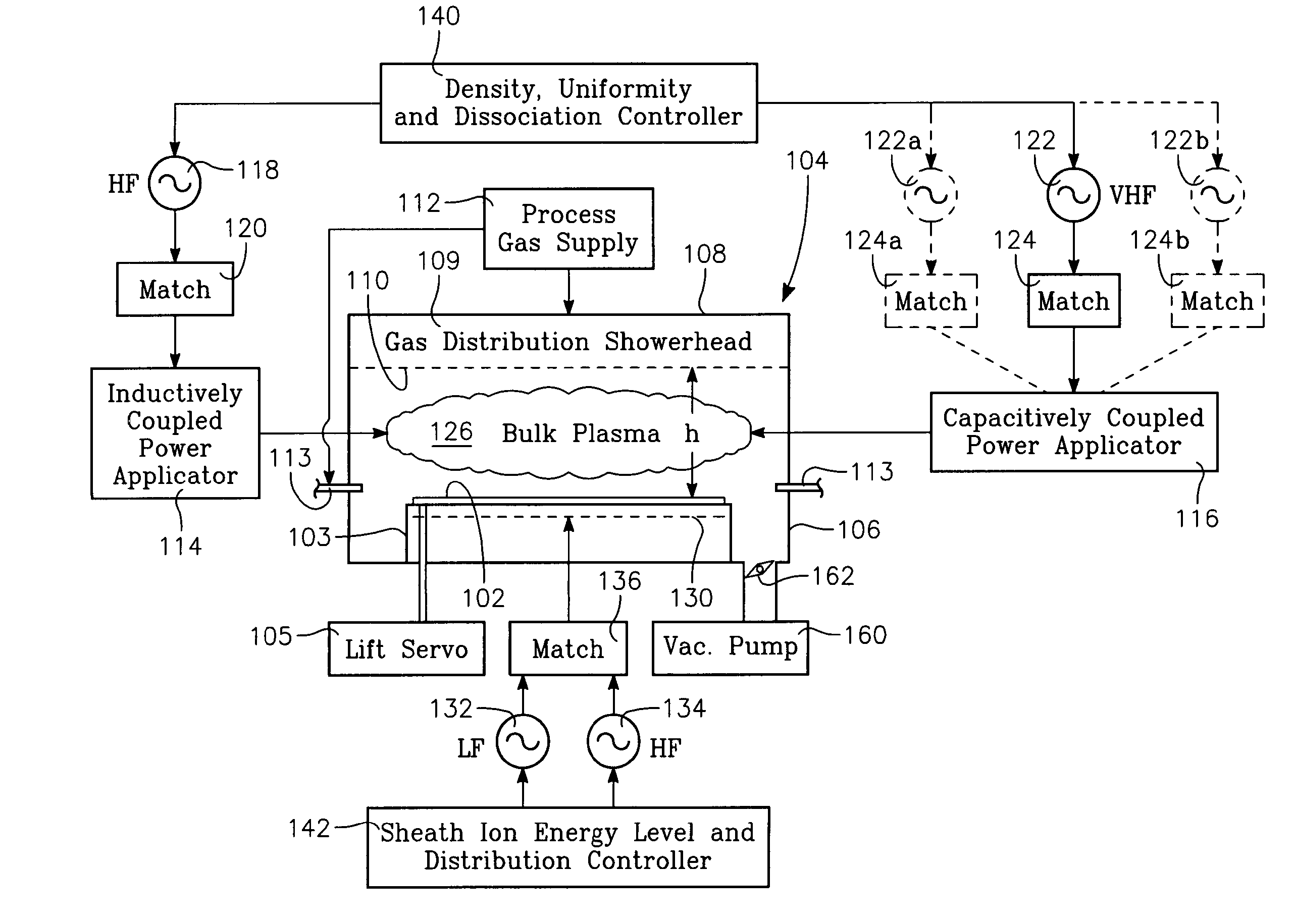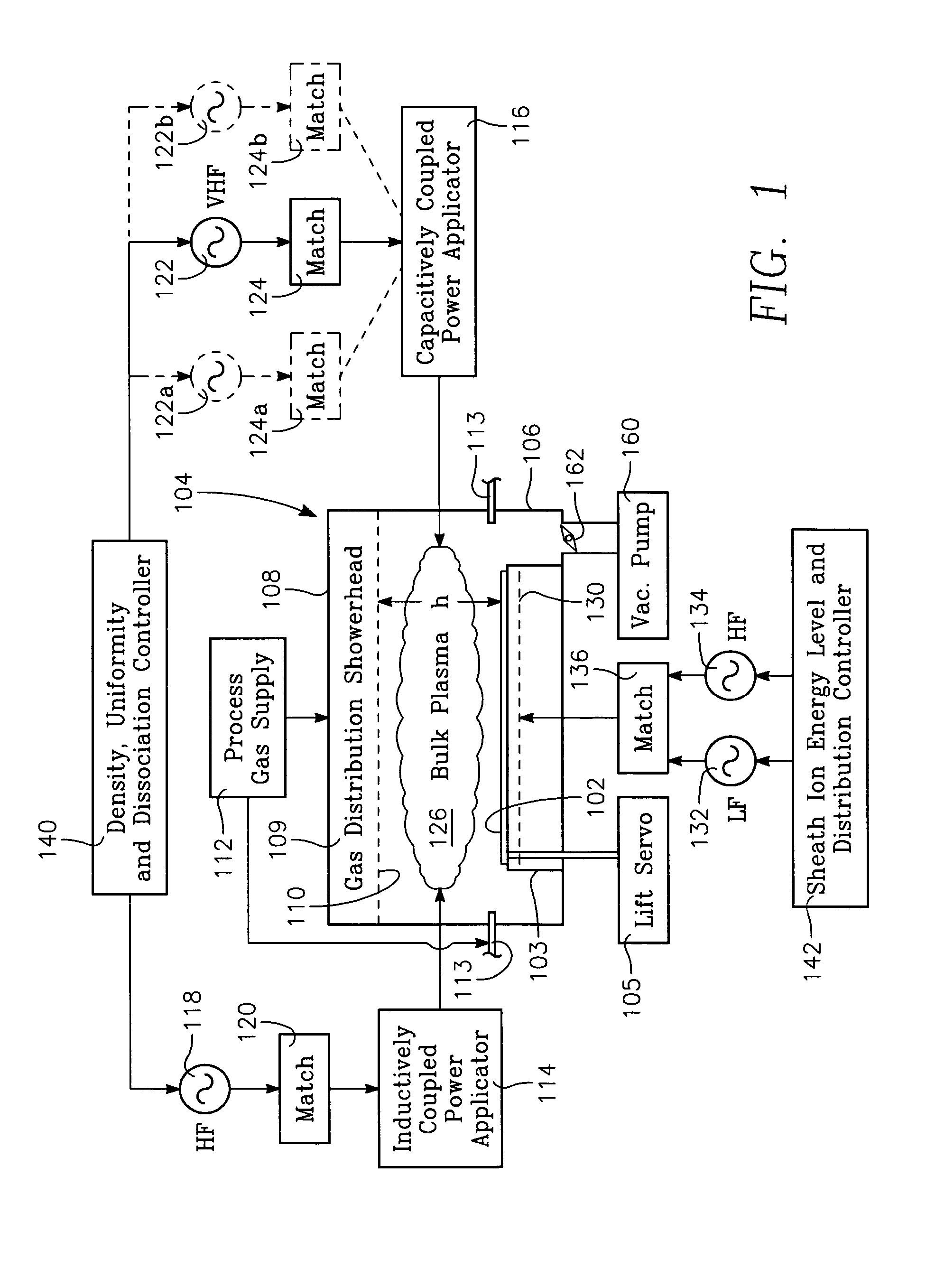Dual plasma source process using a variable frequency capacitively coupled source to control plasma ion density
a capacitively coupled source and plasma ion technology, applied in the direction of instruments, fluid pressure measurement, coatings, etc., can solve the problems of not all process parameters can be independently controlled, non-uniform plasma density is introduced into the processing, and non-uniformity becomes more critical
- Summary
- Abstract
- Description
- Claims
- Application Information
AI Technical Summary
Benefits of technology
Problems solved by technology
Method used
Image
Examples
first embodiment
[0072]FIG. 19 illustrates a plasma reactor of the invention for processing a workpiece 102, which may be a semiconductor wafer, held on a workpiece support 103 within a reactor chamber 104. Optionally, the workpiece support 103 be raised and lowered by a lift servo 105. The chamber 104 is bounded by a chamber sidewall 106 and a ceiling 108. The ceiling 108 may include a gas distribution showerhead 109 having small gas injection orifices 110 in its interior surface, the showerhead 109 receiving process gas from a process gas supply 112. The reactor includes an inductively coupled RF plasma source power applicator 114. As illustrated in FIG. 22, the inductively coupled power applicator may consist of a conductive coil 114a wound in a helix and lying over the ceiling 108 in a plane parallel to the ceiling 108. Alternatively, as depicted in FIG. 23, the conductive coil may consist of parallel helically wound conductors 114b, 114c, 114d. A capacitively coupled RF plasma source power appl...
third embodiment
[0074] An RF power generator 118 provides high frequency (HF) power (e.g., within a range of about 10 MHz through 27 MHz) through an impedance match element 120 to the inductively coupled coil antenna 114a. In one embodiment in which the ceiling electrode 116a is the capacitively coupled source power applicator, an RF power generator 122 provides very high frequency (VHF) power (e.g., within a range of about 27 MHz through 200 MHz) through an impedance match element 124 to the capacitively coupled power applicator 116. In another embodiment in which the bottom (workpiece support) electrode 130 is the capacitively coupled source power applicator, an RF power generator 123 provides VHF power through an impedance match element 125 to the bottom electrode 130. In a third embodiment, both the ceiling and bottom electrodes 116a, 130 comprise the capacitively coupled plasma source power applicator, so that both VHF generators 122, 123 are present. In a further embodiment, both electrodes 1...
PUM
| Property | Measurement | Unit |
|---|---|---|
| Time | aaaaa | aaaaa |
| Density | aaaaa | aaaaa |
| Ratio | aaaaa | aaaaa |
Abstract
Description
Claims
Application Information
 Login to View More
Login to View More - R&D
- Intellectual Property
- Life Sciences
- Materials
- Tech Scout
- Unparalleled Data Quality
- Higher Quality Content
- 60% Fewer Hallucinations
Browse by: Latest US Patents, China's latest patents, Technical Efficacy Thesaurus, Application Domain, Technology Topic, Popular Technical Reports.
© 2025 PatSnap. All rights reserved.Legal|Privacy policy|Modern Slavery Act Transparency Statement|Sitemap|About US| Contact US: help@patsnap.com



